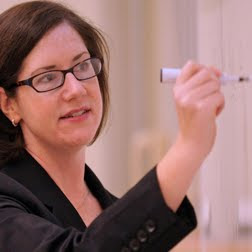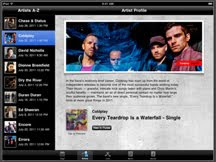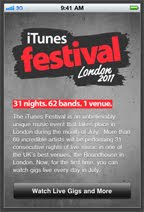 You know it and so do I. Google+ represents a windfall for social media unlike any other social network before it. But even better than a windfall for social media, it could be a windfall for you too, my dear friend, because it's all happening right now!
You know it and so do I. Google+ represents a windfall for social media unlike any other social network before it. But even better than a windfall for social media, it could be a windfall for you too, my dear friend, because it's all happening right now!Facebook? Forgetaboutit. Twitter? Grounded. MySpace? Neverheardofit. Quora? Flashinthepan. Google+ represents the promised land whereas all other social networks before it were merely practice lands.
How To Become A Social Network Expert, Overnight.
Just imagine if you could lock in all the juicy blog headlines about Google+ before Brian Clark. Or maybe host the first, er, second online training session before Chris Brogan. Or maybe you could find the holy grail of marketing (a true influence measure) before Brian Solis. Or maybe that is only the tip of the iceberg.
Somebody is going to become an expert. And the only question you need to be asking right now is ... is it going to be you? Can you write the most SEO threaded posts about G+? Can you deliver more technobabble about your feelings regarding the G+ network? Can you draw beautiful graphics that convince people you've learned to read minds using G+? What about a book? A specialized G+ blog? A dedicated presence on a different social network that only talks about G+?
The ideas we will give you are limitless. All you need to do is strike fast, strike first, and strike fancy. Did you get that? Those are three very powerful words.
Fast. First. Fancy.
Write them down. I'll wait while you do and then you can read why our Google+ program will change your life.
How Google+ Could Change Your Life, Forever.
Imagine what would have happened if you purchased land when the New World was discovered. You would own Manhattan — all of it! Imagine what might have happened if you were smart enough to stop in Nevada on your way to California in the 1800s. You would have discovered the Comstock Lode — all of it! Imagine if you were on the ground floor of development with Steve Jobs. You would be Bill Gates — all of it, er, him! Or just imagine what would have happened if you started a blog three months earlier than anyone else. You would be a social media guru!
It's true. Google+ represents the biggest, baddest, and most significant discovery since ... forever. And right now, every social media pro on the planet is jockeying for the lead position. Whomever gets there first — first workshops, first classes, first books, first anything — wins!
They know it. I know it. And now you know it too.
 But what they don't know is that we've developed an entire program that will be the biggest spoiler in social media history. Sure, with their imported networks, weak links, and seemingly endless amounts of time, they have the upper hand. But it's all for naught.
But what they don't know is that we've developed an entire program that will be the biggest spoiler in social media history. Sure, with their imported networks, weak links, and seemingly endless amounts of time, they have the upper hand. But it's all for naught.They might be very good at what they do, but one thing they don't have — and will never have — is an authentic Google+ certification. That's right. You can earn a Google+ certification in a few short days or perhaps hours if you are an overachiever.
Why is that important? Because all the other other guys that top lists and get the good rankings might be able to claim that they are social media gurus, but this certification will make you a social media G+uru. See the difference? It sends chills down my spine.
We're Absolutely Crazy To Offer You A G+uru Certification, Nuts.
This is your one and only chance to lay the groundwork to become a world-class resource to your customers, colleagues, and company. And, you really, really, really have to do it right now. Our program will catapult you ahead of the curve to be the expert that you deserve to be.
• Learn everything there is to know about Google+.
• Listen to oodles of speculation about what's next.
• Get the skinny on influence algorithms with G+.
• Understand the difference between circles and huddles.
• Frame your certificate to show your ultimate achievement.
• And much, much, much, much more.
In fact, there is so much more — some of it propriety intellectual property (patent pending) — that you will learn 2,397.5 things about Google+ in less than a week ... maybe a few days ... just a couple hours if you are a real go-getter.
That's 2,397.5 things about Google+ that we have learned in the first 250 hours of its launch, along with 158 bonus things that haven't even been introduced yet (but they will, probably, sooner or later). Tempted to enroll? Good! Because my HP Photosmart 8750 is already bustling with activity as we print 10,000 G+uru certificates and the only thing missing is YOUR NAME!
How Much Does It Cost? Much Less Than Its Value, Absolutely.
We are so convinced that the G+uru certification will be so invaluable that we won't even post the price for fear of breaking the Internet as this news gets out. I'm serious. This offer isn't going to go viral — it's going pandemic!
So how much do you think it would be worth if you were on the ground floor as a senior certified G+uru instructor now? Exactly. It's absolutely priceless.
 It's so priceless that in lieu of a certification enrollment fee, we're going to offer the first 500 people the opportunity of a lifetime. We will waive the enrollment fee in exchange for just two or three percent of your lifetime income after you become a G+uru.
It's so priceless that in lieu of a certification enrollment fee, we're going to offer the first 500 people the opportunity of a lifetime. We will waive the enrollment fee in exchange for just two or three percent of your lifetime income after you become a G+uru. Right. This program is so hot that we're willing to gamble on you. Do any of the other guys do that? No. Do they put their money where their mouths are? No. Do they throw in a free T-shirt? Only sometimes.
That's right. It's always the same song and dance with them. Pay once, pay first, and regret it all later. This dance is better. Pay later, pay forever, and never look back.
So what say you? Are you in to take over the Web? Good, because before I even published this post, three people signed up. It's not a revolution, it's an insurg+ence.
This post is satire, with nothing ill-tempered meant to any good sports mentioned. However, I do hope this rings as a true cautionary tale for some. Google+ is a tool. It seems like a very good tool too, just don't forget to use the one you were born with before reaching for your wallet.


























